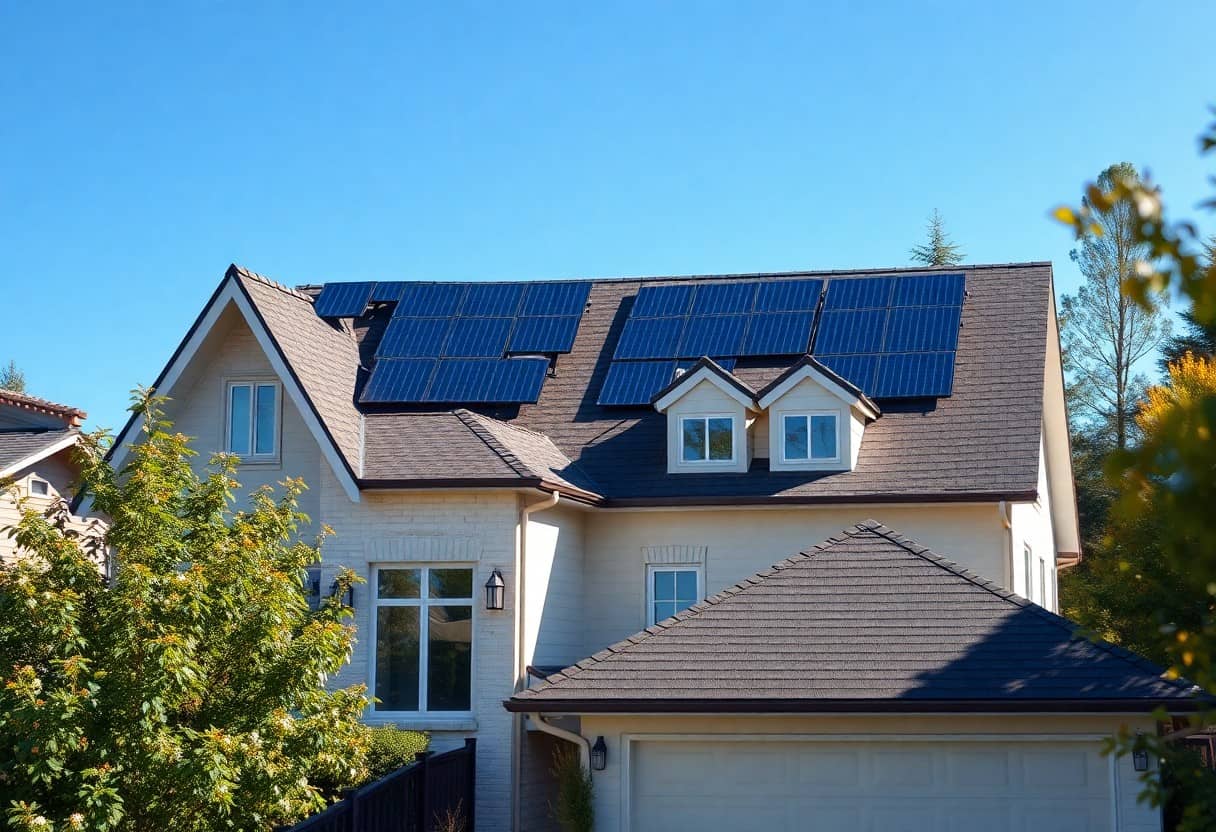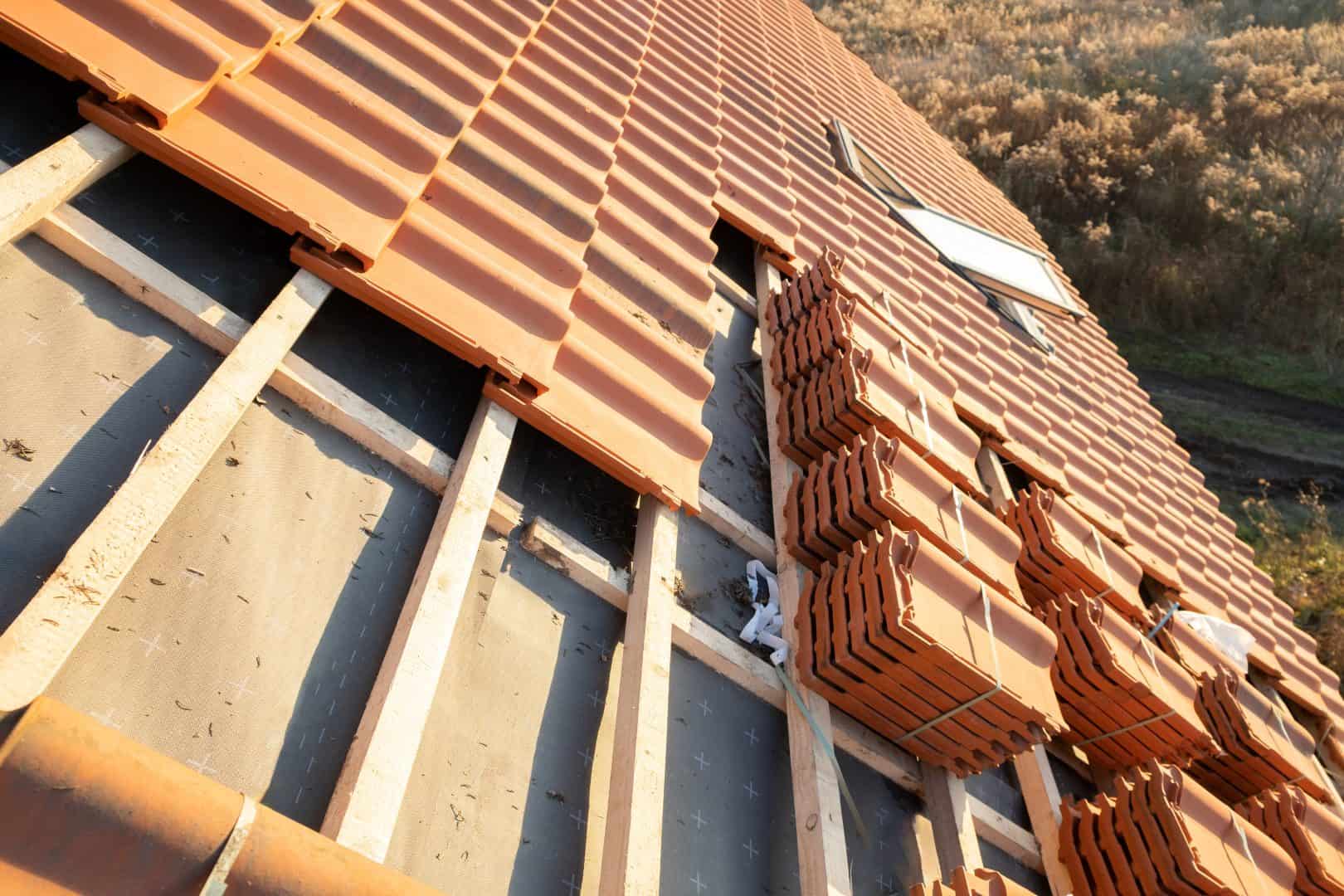Are there energy-efficient roofing options?
Fill Out The Form And We'll Get Back To You

There’s a growing concern about energy consumption and its impact on the environment, prompting many homeowners like you to seek energy-efficient roofing options. These innovative materials not only help reduce your energy bills but also enhance your home’s overall comfort and sustainability. In this post, we will explore various energy-efficient roofing solutions available today, enabling you to make informed decisions that align with your energy-saving goals.
Understanding Energy-Efficient Roofing
Before submerging into the specifics, it’s imperative to grasp the concept of energy-efficient roofing. This type of roofing aims to minimise energy consumption by optimising how your home interacts with heat and light, ultimately improving your property’s comfort and reducing utility costs.
Definition and Importance
The term ‘energy-efficient roofing’ refers to materials and designs that significantly reduce heat gain and loss in your home. This is important as it directly contributes to lower energy bills, enhanced comfort, and a reduced carbon footprint, making it a smart choice for eco-conscious homeowners.
Benefits of Energy-Efficient Roofing
To fully appreciate the value of energy-efficient roofing, it’s imperative to understand its myriad benefits. These roofs typically provide better insulation, which consequently reduces your reliance on heating and cooling systems, leading to substantial savings on energy bills.
It enhances your home’s comfort by maintaining a consistent indoor temperature, irrespective of external weather conditions. Additionally, energy-efficient roofing materials can also have a longer lifespan than traditional options, resulting in fewer replacements and repairs. This sustainable choice not only conserves energy but also emphasises your commitment to environmental stewardship while adding to your property’s overall value.
Types of Energy-Efficient Roofing Materials
Some popular energy-efficient roofing materials can significantly enhance your home’s thermal performance. Here’s a breakdown of the options:
| Material Type | Benefits |
|---|---|
| Metal Roofing | Reflects solar radiant heat, reducing cooling costs. |
| Modified Bitumen | Provides excellent insulation and energy efficiency. |
| Clay and Concrete Tiles | Naturally ventilated materials that keep homes cool. |
| Green Roofs | Helps with insulation while providing aesthetic value. |
| Cool Roofs | Designed to reflect more sunlight and absorb less heat. |
After exploring these options, you can access more information about Best Energy-Efficient Roofing | Types of Cool Roofs to make an informed decision for your roofing needs.
Reflective Roofing
An effective option for reducing heat absorption is reflective roofing. These materials are engineered to deflect sunlight and can significantly lower your energy bills, particularly in warmer climates. This type of roofing is available in various styles and colours, allowing for aesthetic choices while promoting energy efficiency.
Insulated Roofing
Around your home, insulated roofing plays a vital role in maintaining comfortable indoor temperatures. It uses layers of insulation that can minimise heat transfer, ensuring that your home stays warm in winter and cool in summer.
And, by investing in insulated roofing, you create a more energy-efficient environment. This not only helps reduce your heating and cooling costs but also enhances your home’s overall comfort. Consider pairing insulation with other energy-efficient features for optimal results.
Energy-Efficient Roofing Technologies
There’s a growing emphasis on energy-efficient roofing technologies that can significantly reduce your energy consumption and environmental impact. Options such as cool roofs and green roofs are gaining popularity for their ability to enhance energy efficiency. By investing in these technologies, you can create a more sustainable living space while also potentially lowering your energy bills.
Cool Roofs
Technologies used in cool roofs involve reflective materials that reflect more sunlight and absorb less heat than standard roofs. This can lead to lower temperatures on your roof, reducing the need for air conditioning during hot weather. By incorporating a cool roof into your building, you can improve your home’s energy efficiency and contribute to a cooler urban environment.
Green Roofs
Green roofs consist of vegetation planted over a waterproofing membrane, offering both aesthetic and environmental advantages. They can help insulate your home, reduce heat absorption, and support local biodiversity. This innovative option not only enhances your property’s appearance but also plays a part in managing stormwater runoff.
In addition, green roofs provide a habitat for wildlife, improve air quality, and can even increase your property’s market value. By installing a green roof, you are contributing positively to urban ecosystems while enhancing your home’s energy efficiency and comfort. This sustainable choice promotes a healthier living environment and reflects a commitment to environmental stewardship.
Cost Considerations
Many homeowners ponder the financial implications of selecting energy-efficient roofing options. The upfront costs can vary significantly based on the materials and installation, but it is imperative to weigh these against the potential savings on energy bills and maintenance over time. Understanding your budget and the long-term benefits can aid in making a more informed decision that aligns with your economic goals.
Initial Investment
Below the surface, the initial investment in energy-efficient roofing materials can be higher than traditional options. However, you should consider the type of roofing chosen, as prices can fluctuate based on material quality, labour, and the complexities of installation. Choosing premium materials may require a larger investment, but this could lead to better energy efficiency in the long run.
Long-term Savings
After making the initial investment, you may start reaping the benefits of reduced energy costs almost immediately. An energy-efficient roof can minimise heat loss in winter and reduce heat gain in summer, leading to lower heating and cooling expenses.
Savings on your energy bills can accumulate quickly, often leading to a return on investment within a few years. Additionally, many eco-friendly roofing materials come with extended warranties, reducing repair and replacement costs over time. You may also find that energy-efficient roofs contribute to a more comfortable living environment, further enhancing your home’s overall value and desirability in the market.
Choosing the Right Energy-Efficient Roofing Option
All roofing materials are not created equal, and choosing the right energy-efficient roofing option can significantly reduce your energy bills. You should explore various materials and their benefits by consulting informative resources such as Energy Efficient Roofing and Cool Roofs: What Are They?.
Factors to Consider
Consider your location, climate, and the architectural style of your home when selecting roofing materials. Key factors include:
- Energy rating of materials
- Reflectivity and insulation properties
- Longevity and maintenance requirements
This will ensure you make an informed choice that maximises energy efficiency.
Professional Consultation
Below, seeking professional advice can significantly aid in selecting the most suitable roofing option for your needs. Experts can provide detailed insights on applicable materials and installation techniques specific to your roof’s structure.
This tailored guidance ensures you consider all variables for energy efficiency, longevity, and cost-effectiveness, aligning your roofing choice with your home’s specific requirements.
Maintenance of Energy-Efficient Roofs
Once again, maintaining your energy-efficient roof is necessary to ensure its longevity and performance. Regular upkeep not only protects your investment but also enhances your home’s energy efficiency. For more insights, check out What is the Most Energy-Efficient Type of Roof?
Routine Inspections
Around twice a year, you should carry out routine inspections of your energy-efficient roof. This will help you identify any potential issues such as loose shingles or debris accumulation. Keeping an eye on your roof’s condition can prevent larger, costlier problems down the line.
Repairs and Upkeep
An effective maintenance plan includes timely repairs and upkeep, ensuring your roof remains in optimal condition. Addressing small problems immediately can significantly extend the lifespan of your roof.
And, performing regular maintenance tasks such as cleaning gutters and sealing minor leaks helps you maintain the efficiency of your roof. Investing time in repairs not only safeguards your home but also ensures that your energy-efficient roof continues to save you money on energy bills over time.
To wrap up
With these considerations, you can explore various energy-efficient roofing options that can significantly enhance your home’s insulation and reduce energy costs. From reflective shingles to green roofs, these materials are designed not only to contribute to sustainability but also to improve your comfort and save you money in the long run. By choosing the right roofing solution, you invest in a more energy-efficient home that supports both your needs and the environment.
FAQ
Q: Are there energy-efficient roofing options available?
A: Yes, there are several energy-efficient roofing options on the market. These include reflective roofs that are designed to reflect more sunlight and absorb less heat, which can help reduce cooling costs in warmer climates. Options such as installed cool roofs, green roofs with vegetation, and solar shingles that convert sunlight into energy are also popular. Each of these choices can contribute to lower energy bills and a reduced environmental impact.
Q: What benefits do energy-efficient roofs provide?
A: Energy-efficient roofs can offer numerous benefits, including lower energy consumption, which translates to reduced utility bills. Additionally, they can enhance indoor comfort by maintaining more consistent temperatures. Environmentally, such roofs lower greenhouse gas emissions by reducing the need for air conditioning and heating. Some energy-efficient roofing systems may also qualify for tax credits or rebates, further enhancing their attractiveness from a financial perspective.
Q: How can I choose the right energy-efficient roofing option for my home?
A: Selecting the appropriate energy-efficient roofing option depends on various factors, including your local climate, the pitch of your roof, and your overall aesthetic preferences. It is advisable to consult with roofing professionals who can assess your situation and suggest suitable materials. Additionally, consider the initial cost versus long-term savings, as some options may require a higher upfront investment but result in substantial energy savings over time.
Re-Roof of Bungalow
The guys made a fantastic job of replacing the roof on our bunglaow. They were fasy, relaible and excellent value for money.
Chimney Removal
We employed Wrights Roofs to take down our very old chimney – tht had seen better days. They carefully removed and made good the area where the chimney was. Really impressed.
New Roof
We had an extension built and Wrights came and put a new roof on. They were brilliant, no fuss, great value for money. Thank you.
Roofs, Flat Roofs Chimneys and Solar Panels
If you need roof work on your home, please complete the form or call us today.

